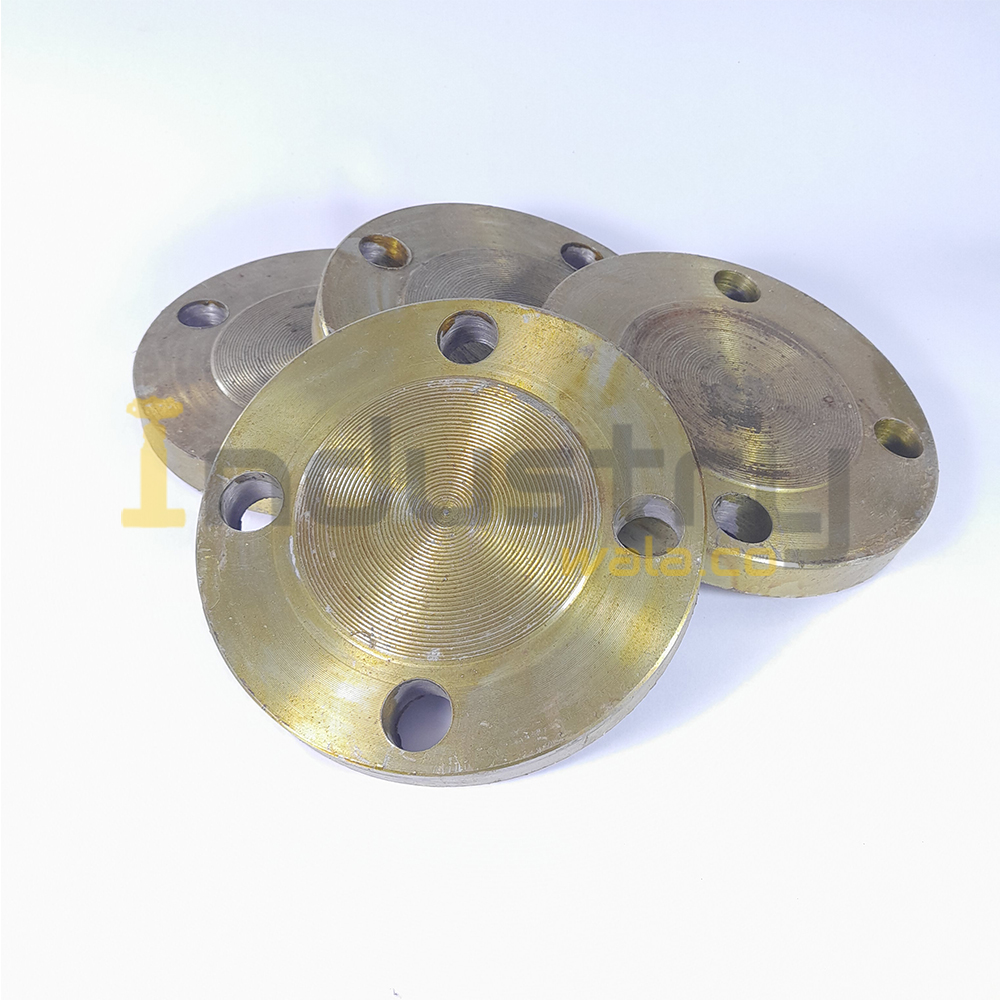- Shop all catagories
- Automated Valves
- Gauges & accessories
- Hydraulics
- Pneumatics
- Water Meters
- Manual Valves
- IBR Certified Boiler Valves
- Non IBR Boiler Valves
- Pipe Fittings & Flanges
CS Blind Flange Table D/E/F/H/ Class 150#/ 300#
₹29 – ₹3,750
For Flange Dimensions, click here- https://www.industrywala.co/uncategorized/flanges-dimentions-for-asa-150-300-table-d-table-e-table-f-table-h/
Product Information
Description
Additional information
Reviews
Description
The blind flange is basically a flange that does not have a hub or a bored center. Blind flanges have the face thickness of a flange, a matching face type, and similar bolting pattern. Blind flanges can also be used to seal a nozzle opening on a pressure vessel.
A flange is a method of connecting pipes, valves, pumps and other equipment to form a piping system. It also provides easy access for cleaning, inspection or modification. Flanges are usually welded or screwed. Flanged joints are made by bolting together two flanges with a gasket between them to provide a seal.
The most used flange types in Petro and chemical industry are:-
1) Weld neck flanges 2) Slip On flange 3) Socket weld flange 4) Lap joint flange 5) Threaded flange 6) Blind flangeMaterials for Blind Flange
Pipe flanges are manufactured in all the different materials like stainless steel, cast iron, aluminium, brass, bronze, plastic etc. but the most used material is forged carbon steel and have machined surfaces. In addition, flanges, like fittings and pipes, for specific purposes sometimes internally equipped with layers of materials of a completely different quality as the flanges themselves, which are “lined flanges”. The material of a flange, is basically set during the choice of the pipe, in most cases, a flange is of the same material as the pipe. All flanges, discussed on this website fall under the ASME en ASTM standards, unless otherwise indicated. ASME B16.5 describes dimensions, dimensional tolerances etc. and ASTM the different material qualities. For Slip On Flanges, Click here. For IBR Certified Blind Flanges, Click here.Additional information
Additional information
| SIZE | 1/2" / 15MM, 3/4" / 20MM, 1" / 25MM, 11/4" / 32MM, 11/2" / 40MM, 2" / 50MM, 21/2" / 65MM, 3" / 80MM, 12" / 300MM, 5" / 125MM, 4" / 100MM, 6" / 150MM, 8" / 200MM, 10" / 250MM |
|---|---|
| Flange Table / Class |
Reviews











